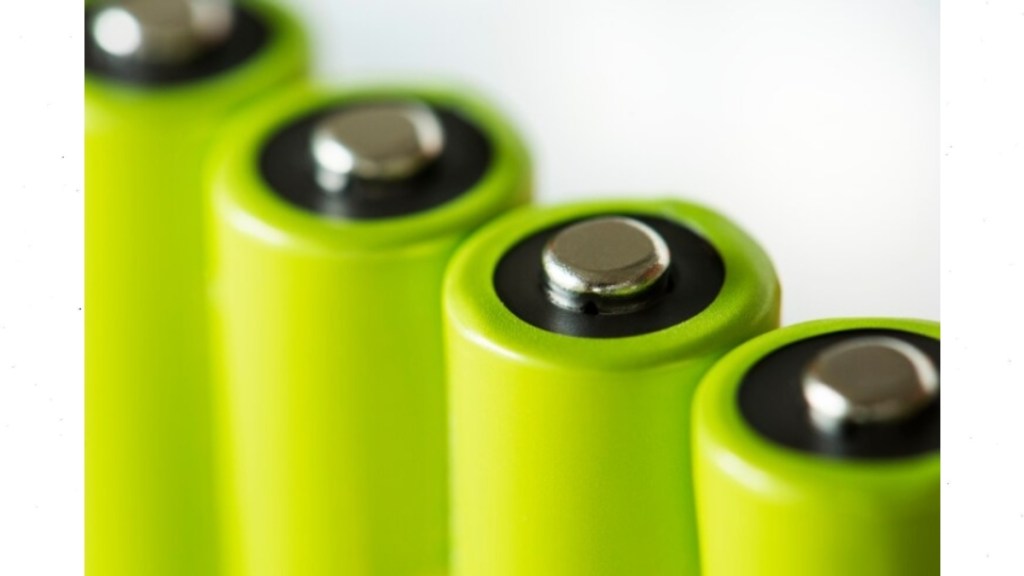By Kavinder Khurana
As the demand for batteries continues to grow across various sectors, the environmental implications of their life cycles have become a critical concern. Traditionally, improving battery lifespan and recycling had much of the focus. Today, an equally promising solution is emerging—battery rejuvenation. This innovative approach not only extends battery life but also contributes to the circular economy, reducing environmental damage and conserving resources.
The industry has been revolutionised with a breakthrough in the battery rejuvenation process – Electro-Chemical Battery Enhancement Process (EBEP). This process is specifically designed for lead-acid batteries. This process restores batteries often considered at the end of their lifecycle, bringing them back to near-full capacity in a cost-effective and environmentally responsible manner. By addressing the root cause of most battery failures—sulphation—this technology holds the potential to revolutionise how battery systems are managed and sustained.
Rejuvenation: Extending Battery Lifespan
Battery rejuvenation goes far beyond repair; it is a systematic process aimed at recovering lost capacity and performance. For lead-acid batteries, sulphation is often the culprit of their demise: lead sulphate crystals accumulate on battery plates, blocking electrochemical reactions necessary to store and release energy efficiently. Eventually, this buildup considerably decreases their capacity to hold a charge over time.
The EBEP process is specifically designed to dissolve these hard sulphate crystals and restore the battery’s plates, thereby reviving its voltage, internal resistance, and overall performance. It works on batteries across all categories—AGM, VRLA, GEL, or flooded—and can even bring back to life those that have been discarded as non-functional. This restoration process involves:
- Screening and Diagnostics: A rigorous evaluation to identify batteries suitable for rejuvenation, ensuring that only those with sound plates are restored.
- Hydration and Restoration: Batteries are hydrated and then subjected to a charging process using a patented waveform current that dissolves sulphate deposits, restoring the battery’s health.
- Final Testing: Once restored, the batteries undergo a quality control check to ensure they meet all operational standards before being reintroduced into service.
This comprehensive approach not only revives individual batteries but also significantly extends their lifespan—by at least a year or more—preventing premature replacements and reducing the environmental impact of frequent battery disposal.
Economic and Environmental Benefits with Circular Economy
Rejuvenating batteries offer numerous financial and environmental advantages. From an economic standpoint, rejuvenation is far less expensive than replacement, helping companies and consumers alike save capital expenditure while still maintaining reliable performance from their battery systems. Reducing demand for raw materials such as lead and lithium (which are both costly to mine and harmful to the environment) through delaying new purchases has an additional environmental benefit: less raw material extraction.
Environmentally speaking, battery rejuvenation provides a more sustainable alternative to disposal. Lead-acid batteries present major environmental risks when they’re improperly discarded – harmful chemicals leach into soil and groundwater, and recycling processes release greenhouse gases. Rejuvenation extends the battery’s operational lifespan, reducing the frequency of disposals, thus decreasing both toxic waste generation as well as emissions caused by recycling processes.
Rejuvenated batteries fit easily within the larger framework of the circular economy, an economic model designed to maximise resource conservation and limit waste by prolonging product and material lifespans and recycling them back into use rather than going straight from usage to disposal. By recycling rejuvenated batteries back into use instead, less strain is placed on our environment and natural resources.
Aligning with Global Sustainability Goals
As the global push for sustainability intensifies, rejuvenation technologies like EBEP provide a practical solution for industries striving to reduce their environmental footprints. The lead-acid battery market, in particular, can benefit immensely from such innovations, as the vast majority of batteries fail prematurely due to sulphation—a problem that EBEP directly addresses.
The rejuvenation process aligns with global regulatory trends that emphasise responsible battery management. In regions like the European Union, where strict recycling standards are enforced, rejuvenation offers an additional layer of sustainability by pre-emptively extending the useful life of batteries before they reach the recycling stage. This complements efforts to reduce hazardous waste while enhancing resource efficiency.
Furthermore, rejuvenation supports the broader transition to cleaner energy systems. By rejuvenating batteries, companies can ensure systems remain operational for longer, thus enhancing the overall stability and efficiency of renewable energy grids.
Future of Battery Technology: Restoration as the Norm
As industries innovate, battery rejuvenation will undoubtedly increase. While research into cutting-edge battery technologies – like solid state and lithium-ion alternatives – remains important, rejuvenation offers an immediate scalable solution for managing existing battery systems. Instead of solely relying on new chemistries, industries can optimise current technologies through rejuvenation processes like EBEP.
In the end, battery rejuvenation stands to become an essential component of sustainable energy management. By prolonging lead-acid battery lifespan and mitigating environmental harm while fitting into circular economies such as EBEP’s circular economy model, rejuvenation technologies such as this offer an immediate solution to meet rising global energy storage demands. As economies transition toward more responsible practices, adopting rejuvenation battery technologies such as these will be essential in driving both economic efficiency and environmental stewardship.
About the Author: Kavinder Khurana is a social entrepreneur who is passionate about innovation in technology and aims to create an impact on the lives of people. With an experience of 25 years in various industries and a vision to bring change in society, he co-founded Energy and Fire Tech India Pvt. Ltd., Kansi Technovation Pvt. Ltd., and GreenLava Eco Solutions Pvt. Ltd.
Disclaimer: Views expressed are personal and do not reflect the official position or policy of Financial Express Online. Reproducing this content without permission is prohibited.









